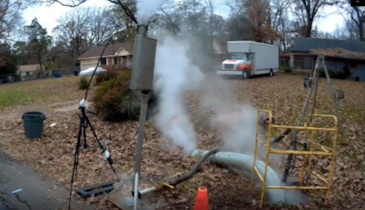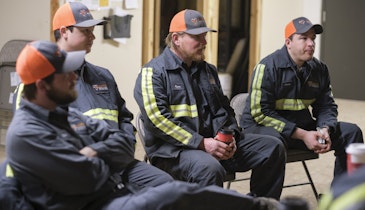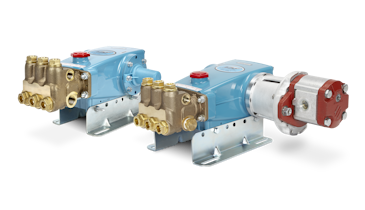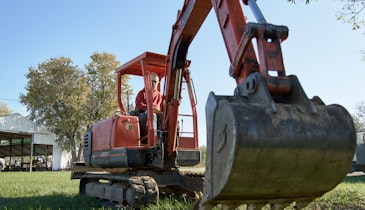Interested in Relining/Rehab?
Get Relining/Rehab articles, news and videos right in your inbox! Sign up now.
Relining/Rehab + Get AlertsSometimes it’s hard to stand out among competitors. Companies that inspect and assess pipelines, for instance, follow a familiar routine: Clean them, inspect them and send the client a report about a week or more later — rinse and repeat.
But that’s not the case at Engineered Lining Systems (ELS) in Jacksonville, Florida, thanks to an investment in a CUES Digital Universal Camera, or DUC, pipeline inspection system. The technology helps the trenchless pipe rehab and assessment company differentiate from competitors by dramatically reducing the time it takes to inspect pipelines and compile assessment reports for clients.
On average, technicians can inspect 3,000 feet of pipe per day as opposed to a more typical 1,000 feet per day.
“It provides us with a huge productivity increase,” says James Macko, ELS production manager. “That significantly decreases our boots-on-the-ground time. Less time on each job results in less time tying up traffic and less time bypassing a line, which means taxpayers get their sewer service back sooner. In addition, we can deliver a higher-quality end product to our clients. It’s a total game changer.”
In addition, ELS typically can submit video footage and assessment reports within hours, as opposed to days with older technology. And by uploading inspection data onto a Google Earth-style mapping program, customer and lining crews can access and overlay the information in the field with multiple devices, says Don Arch, ELS owner and president.
The better end-product stems from CUES’ GraniteNet digital-processing software, which creates video by “stitching” together images taken by the camera. Macko compares the effect to how Google Earth software assembles images that enable users to see panoramic street views of various locations.
“The software effectively allows customers to view the video flat on a screen and see the pipe in two halves,” Macko says. “They can quickly see anomalies without having to watch, say, an entire 30 minutes of video footage.”
Most clients use popular media-viewing tools that lack good fast-forward options. But the CUES system takes that frustration out of the equation, he says.
For certain applications, the DUC can be replaced with a conventional pan-and-tilt camera that takes regular analog video, increasing its versatility.
Finishing inspections faster is a huge benefit for clients because they often hire ELS for emergency assessments, where speed is critical, Macko says.
The CUES DUC technology achieves such dramatic productivity improvements because of the 3.1-megapixel, high-resolution camera head with a wide-angle lens that provides a 180-degree view. The camera snaps four frames per second.
“With video, the operator has to stop at each pipe joint or anomaly to code it,” Macko says. “That takes a minute or so at every stop to make notations. But with the DUC system, there’s no coding done in the field. You can do it that way, but you don’t need to. Instead, you just drive the camera through the pipeline at around 35 feet per minute, then take the images back to the office and code them there. It’s great because you’re not tying up an entire crew that typically has to wait around if you’re using older technology.”
The camera must be mounted on a CUES wheeled or tracked transporter.
Finishing projects faster helps the company tackle more projects because inspection crews are more likely to be available when clients call for emergency service.
“Our philosophy is get the job done and get back to the office,” Macko says. “Anytime you can control labor and potential overtime costs, it makes you more efficient and cost-effective.”
To illustrate the productivity of the CUES DUC technology, Macko cites a recent project for a global company that’s rehabbing a roughly 50-year-old building on 9 acres of land in Jacksonville. The company wanted the project completed in three months.
Concerned about the condition of storm and sanitary sewers on the property, the company hired ELS to map out and assess all the pipelines and create a rehab plan.
“They took a proactive approach — they didn’t want to rehab the building without knowing what’s going on underground,” Macko says.
ELS mapped out all the pipelines and proposed a rehab plan in only three weeks. That probably would’ve taken six weeks with conventional technology, he says.
The company mounted the DUC system on a Kubota all-terrain vehicle, which allows it to maneuver through otherwise inaccessible job sites. The entire system, which includes a Honda generator, the ATV and a box truck to transport it, cost about $250,000.
But in the long run, Macko is confident the investment will pay for itself.
“It’s a very valuable tool in our toolbox,” he says.






